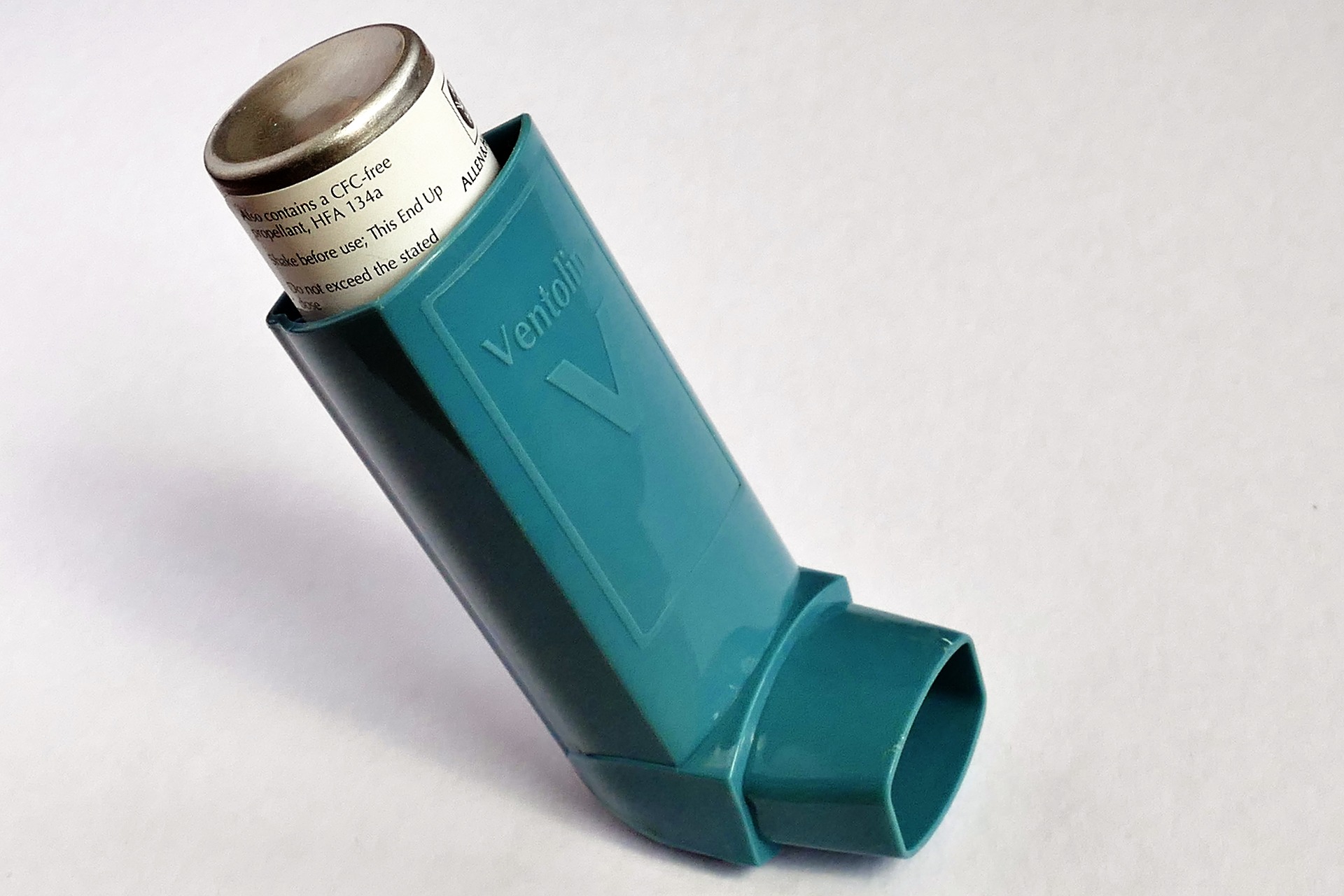If you are like most people with COPD, then you probably use an inhaler every day. Inhaled medications like bronchodilators and steroids are some of the most important and effective medications for COPD—that is, as long as you use them correctly.
Unfortunately, studies show that many, if not most, people do not actually use their inhaler correctly. This is a huge problem for all patients who use inhalers, but especially for people with COPD.
Inhaler medications for COPD not only help you feel better, but they help stave off infections, flare-ups, and dangerous exacerbations that can make your disease worse. If you are not using your inhaler correctly, then you don't get the full dose of the medication you need to keep your symptoms under control.
{{cta('b59df0c1-c4de-47a8-8e1c-0d33d4b414aa','justifycenter')}}
In this article, we're going to look at why so many people use their inhaler incorrectly and what can be done to solve the problem. We'll show you what proper inhaler technique looks like and how to avoid some of the common mistakes patients make when using their inhalers.
Why is Poor Inhaler Technique So Common?

Inhalers are relatively straightforward and easy to use; after all, it's not uncommon to see very young children use an inhaler for asthma. So you might be wondering, how do you use an inhaler wrong, and is it really that easy to do?
Unfortunately, yes, it is very easy to use an inhaler incorrectly just by rushing, holding it incorrectly, or skipping important steps. Inhalers are not complicated, but they do require a specific technique in order to work effectively.
Too many people either don't know the correct steps or believe that getting a little lazy about their technique isn't a big deal. Even worse, studies show that 85% of doctors do not know how to use an inhaler properly, and are thus unable to teach their patients the proper technique.
This can be very dangerous because, when you use an inhaler incorrectly, the medicine won't be as effective as it should be. Improper inhaler technique can significantly reduce how much medicine you inhale and and cause the treatment to fail.
Studies show that COPD patients who use their inhalers incorrectly have worse symptoms, more hospitalizations, and quicker worsening of their disease. It can also cause you to need to take other medications like antibiotics and oral steroids more frequently because your inhaled medication isn't working as well as it should.
It's important to remember that your inhaler contains a precise amount of medication specially selected by your doctor to be personal to you. It's important that you use you inhaler correctly and as directed to make sure that you get the full dose that you're supposed to take.
Are You Using Your Inhaler Wrong?

There are several different types of common inhalers, and each work slightly differently and require different techniques. That's why it's so important for both doctors and patients to be fully trained in the specific type of inhaler prescribed.
However, studies have identified some common mistakes that people frequently make when using their inhaler. Many of these mistakes have to do with preparing the inhaler and breathing technique during use.
If you suffer from COPD, knowing what proper inhaler technique looks like is absolutely vital for your health. That means following every step for your inhaler carefully and avoiding bad technique.
In these next sections, we're going to look at some of the most frequent mistakes that people make with their inhalers and how to correct them. We'll also show you some great resources you can use to learn proper technique for using your specific brand of inhaler.
However, nothing can substitute for a good demonstration from your doctor or another medical professional trained in proper inhaler use. After reviewing the information in this article, make sure you bring your inhaler to your next doctor's appointment so your doctor can evaluate your technique.
How to Avoid Common Inhaler Mistakes

Prepare Your Inhaler Properly
Most inhalers require you to follow some brief preparation steps before every dose you take. Both pulse-dose and dry powder inhaler require some kind of set up before use.
Load a Dose of Medication

Most pulse-dose inhalers have a lever mechanism that you have to flip up before taking your dose. Many dry powder inhalers have a twist mechanism that you have to turn to load a dose of medication.
Don't forget to do this every time you use your inhaler, otherwise you won't get any medication when you press the button. Some dry powder inhalers also require you to prime it by twisting the mechanism back and forth before loading the first dose. This is a one-time thing that you only have to do right before starting a brand new inhaler.
Shake Your Inhaler (for Pulse-Dose Inhalers)
Most pulse-dose inhalers also need a thorough shaking in order to work properly. This is a step that many patients forget or don't do thoroughly enough.
Make sure you shake your inhaler for the full length of time indicated in its instructions and avoid the temptation to rush. Some inhalers require a full thirty seconds to a minute of vigorous shaking before they are ready to use.
Attach your Spacer

If you need to use a spacer, don't forget to attach it to your inhaler's mouthpiece before you take your dose. Spacers are important because they help you time your inhalation correctly with the spray, and if you don't use it you may not get your full dose of medication.
Check for Grime and Debris

You never know when dust, dirt, or other particles may make it into your inhaler's mouthpiece—that is, not unless you look. That's why you're supposed to check your mouthpiece for grime and foreign particles before every single use.
This is also the reason that you should keep the protective outer cap on your inhaler at all times. If you remember to replace the cap immediately after every single use you'll be less likely to lose or misplace it, and your mouthpiece won't get as dirty over time.
Breathing in dust, dirt, or pollen that settles on your inhaler could irritate your lungs and make your COPD symptoms worse. You should also look out for sticky medication build-up, which can block the spray and make your inhaler less effective.
Most importantly, make sure you understand and follow the directions that come with your inhaler in their entirety without skipping any steps. Don't be afraid to ask your doctor to demonstrate how to prepare your inhaler or go over the instructions as many times as you need.
Hold Your Inhaler Upright
You should take care to hold your inhaler upright when you use it, especially during and after loading a new dose. This is especially important for dry powder inhalers; if the mouthpiece is turned sideways or upside-down any time during or after loading, you could lose some of the medication and get too small a dose.
Be careful to hold your inhaler straight up and down, not at an angle, when you take your dose. You should also make sure to position the inhaler correctly at your lips; leaning in too far can cause the spray of medication to land on your mouth or tongue, instead spraying straight down your throat.
Breathe Out Completely First
When you use your inhaler, you want the medication to make it all the way through your airways and deep into your lungs. This works best when you exhale first to clear your lungs of stale air before inhaling your medication.
Unfortunately, many patients skip this step either because they don't know or because they are in a hurry or forget. Other patients don't take the time to breathe out fully enough, leaving air in their lungs and airways when they take their dose.
However, it's important to make sure that you don't exhale into your inhaler when you breathe out, especially if you use a dry powder inhaler. Instead, turn your head to the side or tilt it up, away from your inhaler, before beginning to exhale.
Aim Your Inhaler Correctly
The primary purpose of an inhaler is to deliver your medication directly to your lungs and airways. This helps the medicine act quickly to reduce inflammation and respiratory symptoms at their source.
However, some people who use inhalers end up aiming the spray in the wrong place when they inhale. This causes the spray to mist your mouth or tongue, and less of the medication actually makes it down your throat.
That's why it's important to take your time and angle the mouthpiece correctly when you use your inhaler. If too much of it ends up in your mouth, you may not breathe in enough medication to receive the full dose you're supposed to take.
Always make sure you hold your inhaler upright and use your spacer if you have one. Do your best to aim the spray right at your throat so you can inhale as much of the spray as possible.
Use Proper Breathing Technique
 |
| Image courtesy of NIAID. |
Some patients get too little medicine from their inhaler because they don't use proper breathing technique when they take their doses. Some people inhale too quickly, too late, or don't breathe in forcefully enough to take in all the medicine.
When you use your inhaler, you should always take long, slow, deep breaths. If you have trouble with this because of your COPD, take the time to practice some breathing techniques like pursed-lips breathing to help you catch your breath before you take your dose.
To make sure you are inhaling at the correct time, start breathing in slowly just before you you press the button to release the dose. As the dose sprays, begin inhaling more deeply to pull the medicine into your lungs.
If you use a dry powder inhaler, you may have to inhale more forcefully to get the full dose of medication. If you have any trouble timing your inhalation correctly or breathing in deeply enough, talk to your doctor and demonstrate how you use your inhaler so he can help you hone your technique.

Don't Forget to Hold Your Breath

When you breathe in the medication from your inhaler, you should breathe slowly, deeply, and take in as much air as possible. Then, you are supposed to hold your breath to give the medication time to absorb.
This is a step that many patients tend to forget or cut short. You should hold your breath for ten full seconds, or as long as you can if you can't hold your breath for that long.
Holding your breath after using your inhaler is an important part of proper inhaler technique and is important for your medication to work effectively. If you are supposed to take a second dose, you should always wait thirty seconds to a minute (or whatever time is indicated in the instructions) after the first dose before using your inhaler again.
Rinse Out Your Mouth

Even when you use proper inhaler technique, a small amount of the medication inevitably ends up in your mouth instead of your airways. Certain medications, especially corticosteroids, can cause uncomfortable symptoms like mouth dryness and irritation when this happens.
This is important because a dry mouth is more than just uncomfortable; it can actually be bad for your health. When your mouth is dry too often, it creates opportunities for bacteria to grow, and can cause cavities, gingivitis, and even fungal infections in your mouth.
That's why many inhalers, especially steroid inhalers, include instructions to rinse out your mouth right after use. This washes any extra medicine off the surface of your mouth before it has a chance to absorb into the lining.
However, this only works if you wash your mouth out immediately after using your inhaler (and after holding your breath, of course). Even waiting 30 seconds to a minute too long may allow too much of the medication to absorb into your mouth.
{{cta('fa8abc2a-1e88-4fa3-82fd-1cb5b9ed43b2','justifycenter')}}
To help you with proper rinsing technique, use your inhaler in front of a sink and make sure you have a small cup of water at the ready. Then, after you use your inhaler, immediately take a large sip of water and swish it around your mouth.
After a few seconds, spit the water back out into the sink. As long as you rinsed your mouth out immediately, this should effectively get most of the medication out of your mouth and help you avoid dryness and irritation.
Never Use an Empty Inhaler
Some patients continue using their inhaler after it's run out of medication because they don't realize that it is empty. This can be very dangerous because you don't get the medication you need to manage your COPD.
Many types of inhalers have dose counters to help you tell when you've run out of doses. Make sure you always pay attention to this counter and start a new inhaler once it reaches zero, even if your inhaler still sprays.
Unfortunately, many metered dose inhalers do not have dose counters to tell you when they are empty. However, you can tell whether or not it is empty by listening for the sound of the medication inside when you shake it. You can also check by spraying the inhaler into the air; if you see a mist, then you know it isn't quite empty yet.
Practice in Front of Your Doctor

Medical experts recommend that doctors have their patients demonstrate using their inhaler in front of them at every doctor's visit. This allows doctors to catch and correct any mistakes and refresh their patients' knowledge of proper inhaler technique.
However, in practice, may doctors and patients get too comfortable and see this part of the examination as unnecessary. Inhaler demonstrations may also get skipped or overlooked when the patient forgets to bring their inhaler to the appointment.
Unfortunately, there is another deeper problem with doctors teaching proper inhaler use: Studies show that the majority of doctors themselves don't know how to follow the steps correctly. That's why it's important to work with a doctor whom you trust and who is thoroughly trained in how to use all the medications he prescribes. It may also be worthwhile to ask your doctor how confident he is about demonstrating proper inhaler technique and how recently he has refreshed his training.
To reduce the chances of error, you and your doctor could go over the detailed instructions that come with your inhaler together as you practice your technique. You can also talk to a licensed pharmacist at the pharmacy when you pick up your prescription; pharmacists are trained in how to use inhalers properly and should be able to show you how use yours right.
Know Your Medications
Managing all the medications you need to take every day is not always easy, especially if you have advanced COPD or suffer from another disease or condition. However, your medications are your lifeline, and it's vital to know each and every one of them and understand how they work.
You need to know your inhalers by more than just their color or brand; you should be able to name each medication and explain what it is for. If you need help, take some time to study the information packet that comes with your prescription or ask your doctor to explain.
You can also talk to your pharmacist if you have any questions about your medications or just need someone to explain them to you in more detail. Never be afraid to ask questions, even if you need to ask the same question more than once; it's easier to understand something when you hear it explained multiple ways.
Medicine and health is a complex topic, and it may take time some and patience to learn all that you need to about your disease and your medications. The more knowledge you have, the better you will be able to manage your disease and take an active role in your own health and treatment.
Here is an overview of some of the most common inhaled medications prescribed for COPD.
Short-acting Bronchodilators: Opens up your airways and makes it easier to breathe, often used in rescue inhalers for quick symptom relief.
- Albuterol
- Levalbuterol
- Ipratropium
- Proventil
Long-acting Bronchodilators: Often used in maintenance inhalers to manage daily,long-term symptoms.
- Aclidinium
- Almeterol
- Arformoterol
- Indacaterol
- Symbicort
- Spiriva
- Atrovent
- Brovana
- Arcapta Neohaler
- Tiotropium
Corticosteroids: Reduce inflammation and are often used to treat COPD exacerbations and daily symptoms.
- Pulmicort
- Fluticasone
- Budesonide
Combination bronchodilator inhalers: Contain a combination of two or more different bronchodilator medications.
- Combivent Respimat
Combination Bronchodilator and Steroid Inhalers: Contains a combined dose of at least one bronchodilator medication and one steroid medication.
- Advair
- Breo Ellipta
Take Your Medication in the Correct Order
![]()
Many patents, especially those with more severe symptoms, have to use more than one inhaler to manage their COPD. When this is the case, the order in which you use your inhalers can be very important and affect how well they work.
For example, many patients have two primary inhalers: a rescue inhaler (usually containing a short-acting bronchodilator) and a maintenance inhaler (often containing a different type of long-acting bronchodilator). Some patients also use steroid medication inhalers or combination inhalers with a mixture of bronchodilators and/or steroids.
Depending on your unique condition

